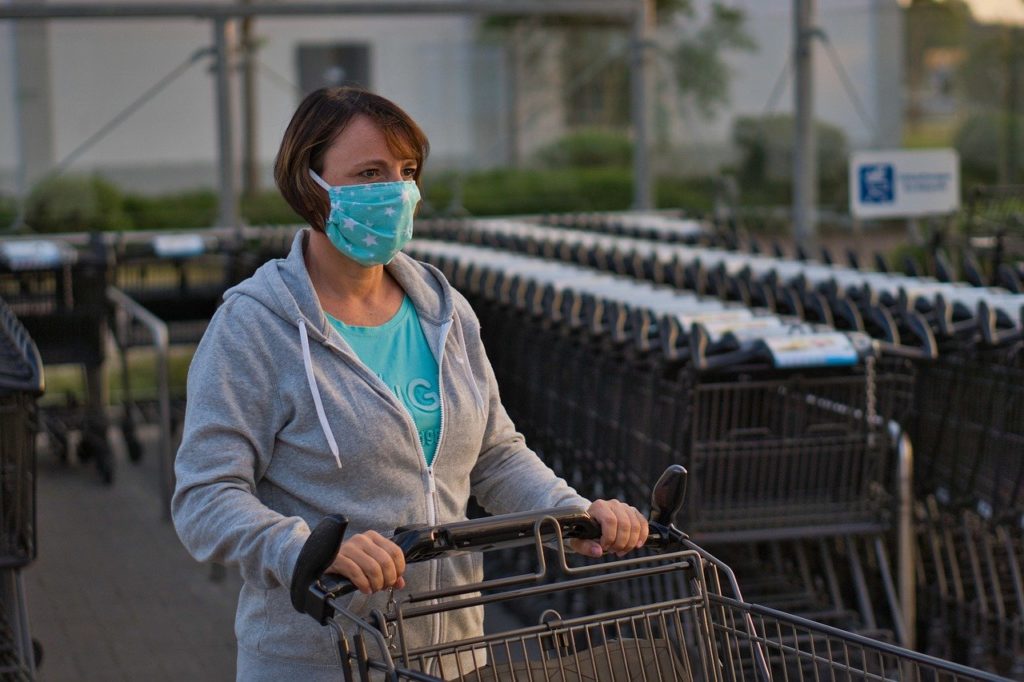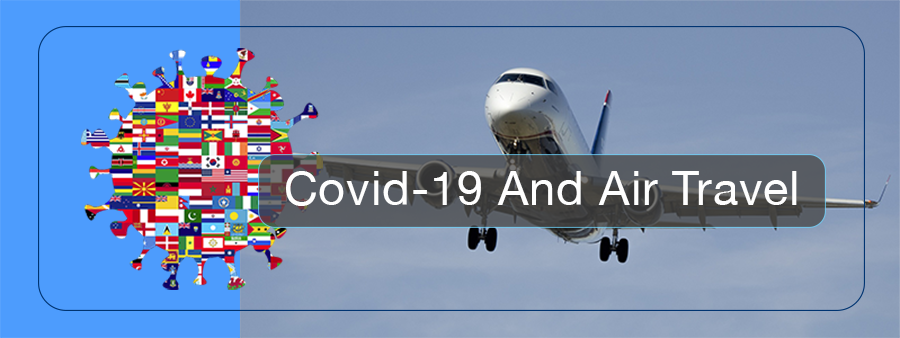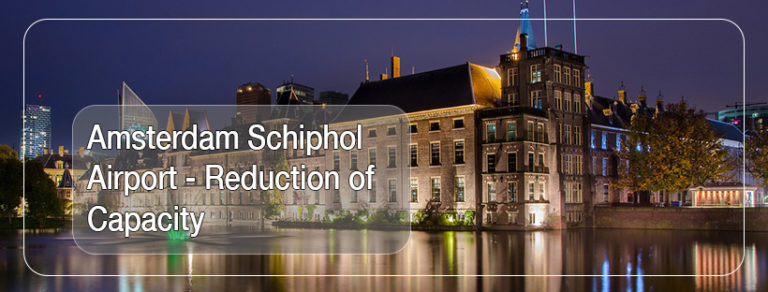The Airline industry has been one of the worst hit by the Coronavirus pandemic. It will be several years before airlines around the world recover from the damage. The International Air Transport Association (IATA), estimates lost revenue for 2020 will be 314 Billion US dollars. IATA also estimates that 4.5 Million flights will be cancelled by June 30, 2020. Never before has the Industry been hit so badly by a pandemic virus.
In the recent weeks a lot has been written in the Press, discussed on TV and over the airwaves, about the impact the deadly disease will have on the Airline Industry and its consequences. It may well change the entire face of air travel for ever. Many doomsday specialists tell us air travel will never be the same again.
IATA Recommendations
What will happen behind the scenes within the Industry is a totally different story, and one for another blog. Let us look at customer facing services and see how the changes will affect airlines and air travel. IATA recommends the following processes. I quote from their Press Release of May 05, 2020
- Temperature screening of passengers, airport workers and travellers.
- Boarding and deplaning processes that reduce contact with other passengers or crew.
- Limiting movement within the cabin during the flight.
- Simplified catering procedures that lower crew movement and interaction with passengers.
- More frequent and deeper cabin cleaning
What Will Work?

The IATA recommendations make good sense and will certainly help mitigate the risks involved. Let us have a closer look at the whole process. Temperature screening is already part of the routine in many areas of our day to day life, under the current circumstances. It will most certainly be applied at airports as well. While boarding and disembarking, social distancing will probably come into play. This of course can be controlled to a great extent, but will also depend on the size of airports and the number of processing staff available at bottlenecks. Smaller airports will have to limit the number of flights operating into and out of their terminals. Even the largest of airports may have issues with Immigration and Customs areas. There are only that many Security, Immigration and Customs Officers at any given airport. Security check-points at major US airports were already jammed to capacity when Covid-19 arrived, demonstrating severe shortages. The greatest challenge will however be the onboard seating and inflight facilities.
Breakeven Load Factor
Social distancing is not going to work on board. It is just not going to happen. Many newscasts and television channels have spoken about the middle seat being left vacant. To me, it makes absolutely no sense. Firstly, the average seat only has a width of less than 50 centimetres. That is nowhere near the social distancing between people recommended by specialists. Secondly and more importantly, we need to consider profitability. Airlines are not charity organisations. They will have to earn money for their shareholders and owners. If they are not profitable, they will certainly go bust. No airline can fly on a promise of future profitability. There is what the Industry calls a Breakeven Load Factor (BLF). In recent years, intense competition has driven the BLF to over 75%. The current Industry average is 77%. When you take into consideration the huge cost of aeroplanes and modern airports, the fact that we could fly intercontinental routes for a few hundred dollars was nothing short of a miracle. Coming back to the BLF, in other words the airline will have to sell over 77% its aircraft seat capacity to make a profit.
| Geography | Breakeven Load Factor | Average Fare 2019 | Average Fare with Social Distancing | Increase in Average Fare |
|---|---|---|---|---|
| Africa and Middle East | 75% | $181 | $259 | +43% |
| Asia Pacific | 81% | $141 | $217 | +54% |
| Europe | 79% | $135 | $201 | +49% |
| Latin America | 79% | $146 | $219 | +50% |
| North America | 75% | $202 | $289 | +43% |
| North Asia | 76% | $135 | $195 | +45% |
Onboard Social Distancing And Profitability
Taking the middle seat out will remove over a third of the aeroplane’s seat capacity (assuming it is a three-three configuration with the aisle in the middle). Long-haul flights almost always operate with different configurations. The protagonists have not clarified on how their recommended configuration will work in such situations. The unoccupied middle-seat will certainly translate to a loss according to current BLF metrics. One may argue that an increase in airfares, could compensate the shortfall. Such a decision will push up airfares by between 43% to 54% depending on the geographies within which the flights operate. Such a phenomenon will be the death knell of cheap travel. Again, one can be assured that at increased airfares, planes will not be filled to capacity, making operating margins a real tight rope for carriers to walk.
Safety Of The Onboard Experience
IATA argues that their own research including Contact Tracing (into onboard data that is available on Covid-19), has clearly indicated that the Virus been more kind to air travellers when compared to other modes of transport. They site several plausible reasons. Among them are the nature of air-flow inside the cabin as well as the use of High Efficiency Particulate Air (HEPA) filters in modern aircraft. This may indeed be some of the reasons for lower risks inside the cabin.
Limiting movement within the cabin during a flight, simplified catering procedures, lower crew movement and interaction with passengers can perhaps be more easily achieved. More frequent and deeper cabin cleaning can be organised.
When Will The Airlines Take To The Skies Again?
That, is the Billion Dollar question! The commencement of air travel operations is right now anybody’s guess. Carriers are beginning to make preparations for the day when they will commence flying again. Personally, I feel that Business Travel will be the first to take off. Simply because many businesses need to have their staff travel, and also because they will be able to afford marginally higher fares. Leisure Travel will certainly take a back seat. People are going to be careful with their savings and will certainly watch how things develop before they take the plunge. Visit Friends and Relatives (VFR) Travel may go with Leisure, or even join in later.
Conclusion
Many people believe that this will be the end of the rainbow of travel. I certainly do not think so. Optimists reinvent everything. Travel will be reinvented as well. Those who have been bitten by the travel bug, will never cease to travel. Travel will happen again. It may take a few years to come back to the levels we had become used to; but it will certainly come back, stronger than ever before! Remember; the discovery of a vaccine will certainly put everything back on track again.
Covid-19 Air Travel – FAQs
Will COVID-19 create a loss for commercial airlines?
The International Air Transport Association (IATA) estimates the cumulative loss will be 314 Billion US dollars.
What is the estimated number of flight cancellations due to COVID-19?
The International Air Transport Association (IATA) estimates that 4.5 million flights will be cancelled by June 30, 2020, due to the Coronavirus situation.
What is the break-even load factor with commercial airlines?
The break-even load factor is the passenger load that is required to make a flight operation economically viable. Expressed as a percentage, it is the point at which the flight is declared profitable, or otherwise.
What is the current break-even load factor?
As of May 05, 2020, according to the International Air Transport Association (IATA), the Airline Industry’s average break-even load factor is 77%.
What is the North American break-even load factor?
As of May 05, 2020, according to the International Air Transport Association (IATA), the Airline Industry’s North American average break-even load factor is 75%.
What is a HEPA Filter?
A HEPA filter is a High-Efficiency Particulate Air filter that is used in modern aeroplanes to clean cabin air, bringing the quality up to hospital operating theatre levels.
What is VFR Travel?
VFR Travel is the popular initialism used by the airline industry for Visit Friends and Relatives travel.
What is IATA?
IATA is the acronym for the International Air Transport Association. It is a body of member airlines that jointly regulate the Airline business, laying down rules for the member airlines to follow.
© Mano Chandra Dhas
Note – Share your thoughts below. I will respond to all comments. Use the social media buttons to share this post with others who might find it useful. Please subscribe to never miss an update!





Dear Mano
Is iata relevant any longer? Feel they exsist only if travel trade does!
Hi Ranjith! IATA will have to play an increasingly relevant role in the sceme of things to come. We know that a central agency is required to co-ordinate the many different elements that come together as Travel. Just as every country has its own Central Bank, IATA is necessary. We cannot do without IATA.
Great Article. A very unbiased opinion which is highly realistic.
Thank you, Naveet.
Very realistic thought.
Thank you for your comment, Roland.
Very candid and real time review of the current situation and forecast.
Hey Daniel! Thank you. I appreciate the support. Kind regards, Mano.
Mabruk ! Mano,
I see that you are still “active” while I have not been able to get any further news from Krimi.
Ciao, let’s stay in contact!
Tino
Thank you, Mr. Frigino. Krimi is awful with communications. You should have enlisted him into the HAM club! 😊